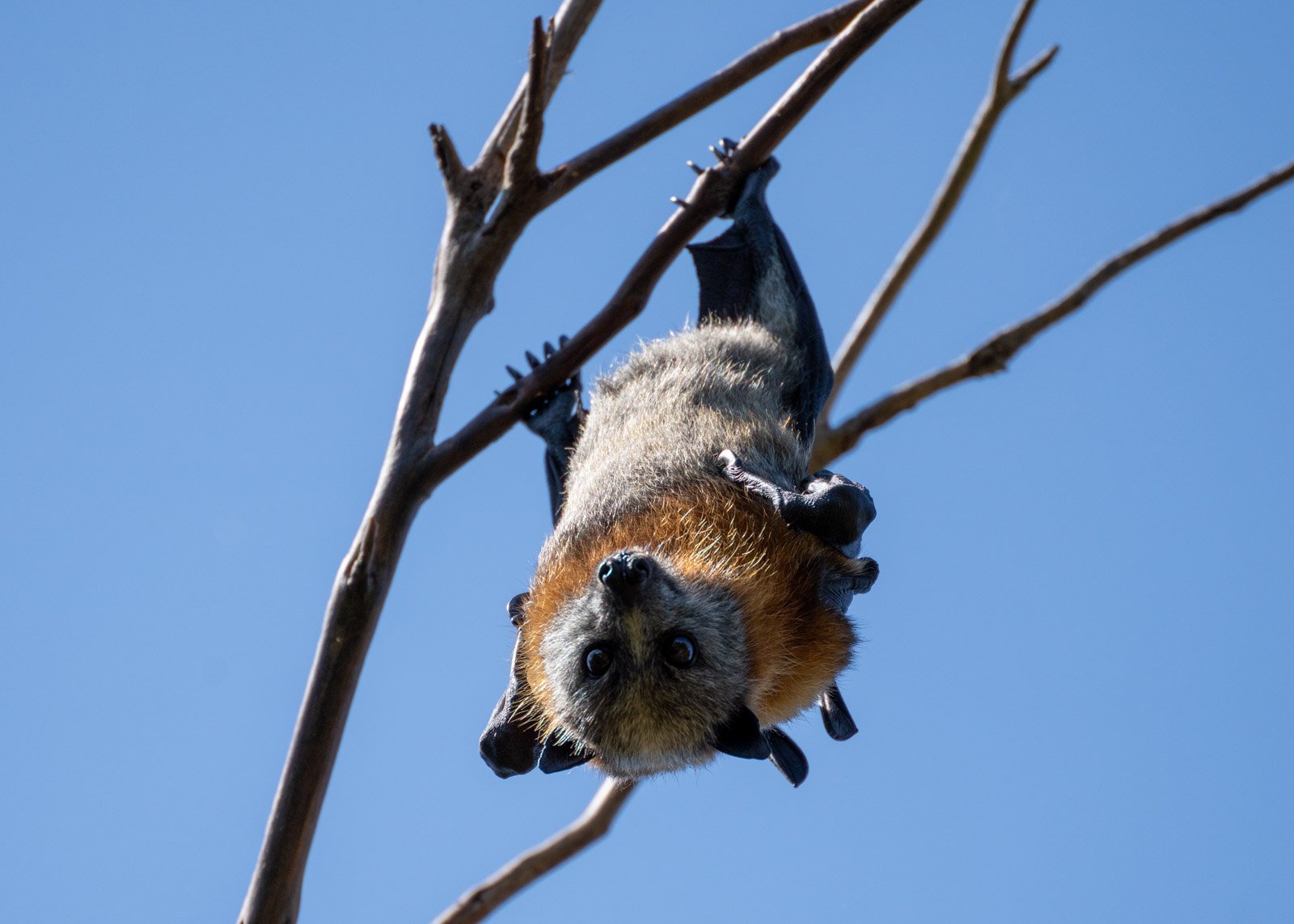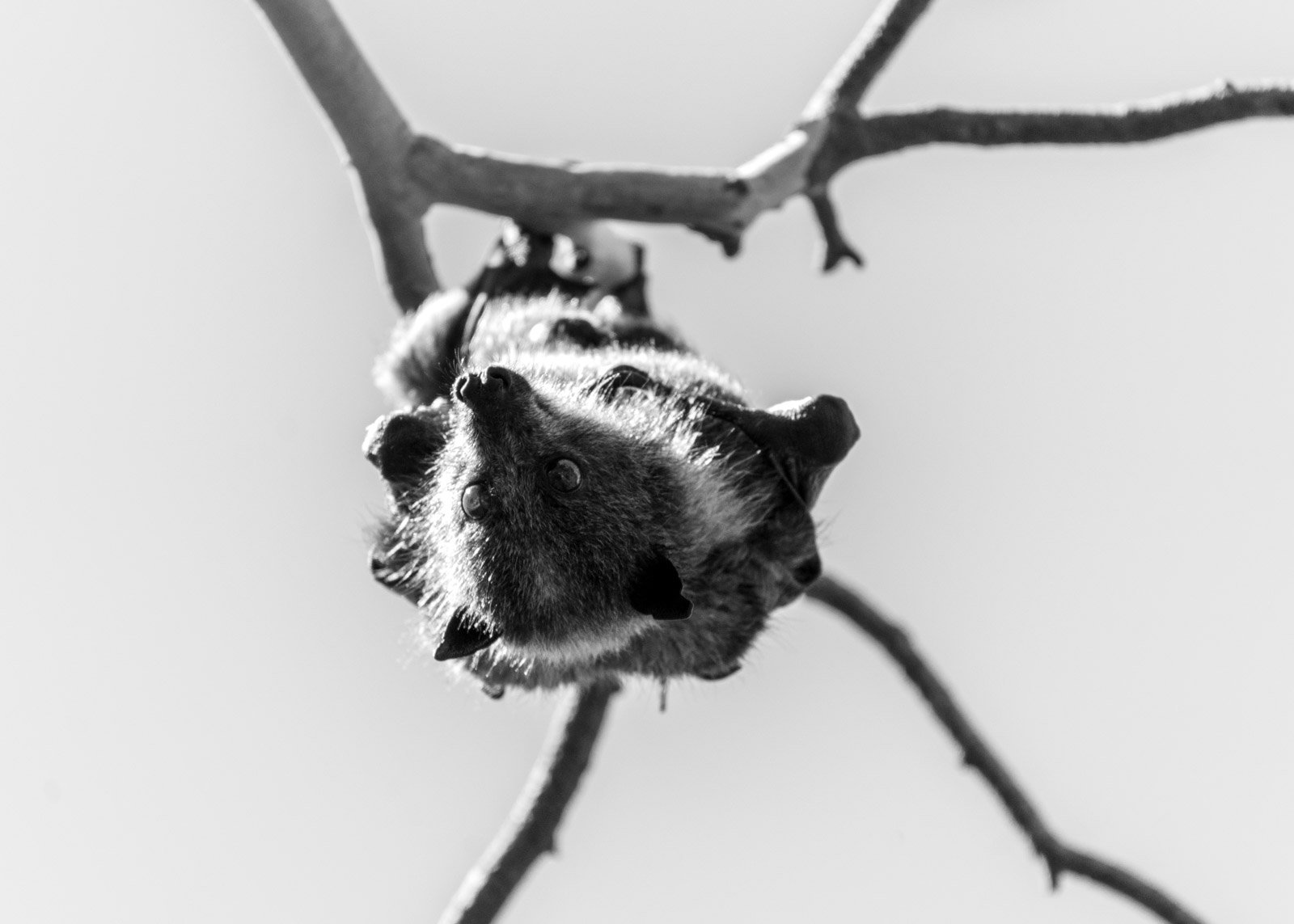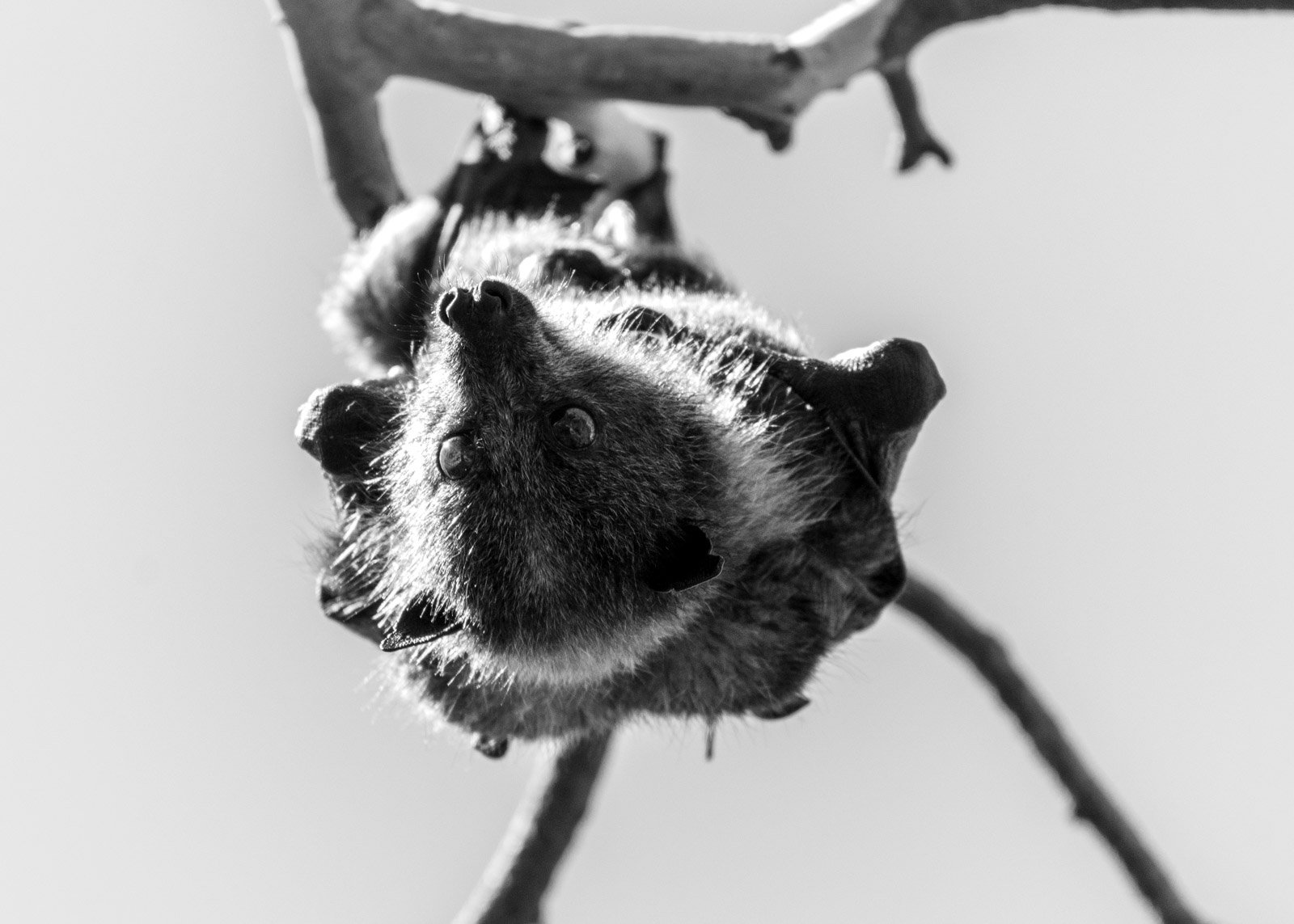Meet the grey-headed flying fox
Meet the grey-headed flying fox (Pteropus poliocephalus). They are megabats and the largest of Australia’s four types of fruit bats. They are cute and fascinating but seriously endangered. There is a colony not too far from where I live, and every night, I hear them overhead. I recently went to visit their colony to learn more about them and to photograph them.
Grey-headed flying fox
Habitat
Bats hang by their feet as it’s more energy efficient
They live along the Southeast coast from central Queensland in the North to Melbourne in the South. In Victoria (where I am), their survival is precarious, mostly due to deforestation. As the bats lose their food source, the trees also lose one of the best and most important pollinators. Without these bats, many Australian indigenous plants and other animal species would not survive. Their favourite food is the nectar and pollen of Australian eucalyptus, banksias, melaleucas and rainforest fruit. They pollinate and disperse seeds to over 100 species of native trees.
The flying fox
The flying fox navigates by eyesight, scent and sound, not echolocation like regular bats. Their senses are so sharp that a mother can always find her baby among the thousands of other bats in the colony. Flying directly back to them after a night’s feed. They are pregnant for six months and then give birth to a single baby around October.
A mother and young
The young will cling to their mother’s fur for the first few weeks and be suckled until around five months old. Young bats will start to fly short distances after just three months. They head out with the colony once they are around a year old.
Did you know?
Flying foxes can see better than humans and their night vision is as good as cats.
Bats hang by their feet as it’s more energy efficient.
Bats are the only mammals capable of sustained flight.
Flying foxes are actually very clean, healthy animals that groom constantly.
Flying foxes can live up to fifteen years in the wild.
Like to help?
If you’re a local, you can plant local native trees and shrubs. Keep cats inside at night, and only use wildlife-friendly nets on your fruit trees. If you would like to learn more, visit www.parks.vic.gov.au.
I used my Tamron 70-300mm lens to capture all of these photos. They are noisy, sadly a little smelly, quite inquisitive and super cute. A friend called them flying sky-puppies and it has stuck! We spent a lovely afternoon watching them. We had hoped to capture some images of them skimming the water in the heat of the day, but sadly not this trip.











